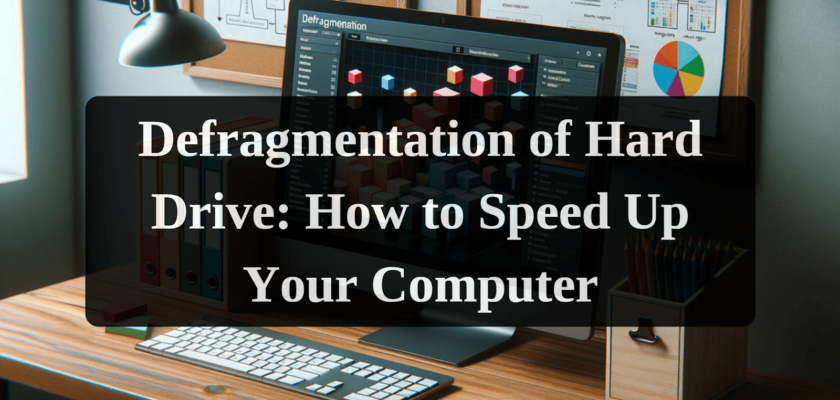Defragmentation of a hard drive is a process of rearranging the files on the hard drive so that they are located in consecutive sectors. This allows the read head to find the required data faster, resulting in improved computer performance.
How a Hard Drive Works
A hard drive is a device that stores all the information on your computer. It consists of several rotating platters coated with a magnetic layer. Data is written to these platters in the form of zeros and ones.
When you save a file to a hard drive, it is split into several parts and written to different sectors of the platters. This is done to ensure that the data can be evenly distributed across the surface of the drive.
What is Fragmentation
Fragmentation is a condition in which files on a hard drive are split into several parts located in different sectors. This can happen if you frequently add or delete files from the hard drive.
Why Defragmentation is Needed
Defragmentation is necessary if you want to improve your computer’s performance. Fragmented files can slow down your computer as the read head has to move around the drive to find all the parts of a file.
How Defragmentation is Performed
Defragmentation can be performed using either the built-in Windows tools or third-party programs.
Built-in Windows Tools
To perform defragmentation using the built-in Windows tools, follow these steps:
- Open the “My Computer” window.
- Right-click on the desired drive and select “Properties”.
- Go to the “Tools” tab.
- Click the “Defragment and Optimize Drives” button.
- Select the drive you want to defragment and click the “Defragment” button.
Third-Party Programs
There are many third-party defragmentation programs available. Some of them offer additional features, such as the ability to defragment individual files or folders or the ability to schedule defragmentation.
How Often Defragmentation Should be Performed
It is recommended to perform defragmentation once a month or two. If you frequently add or delete files from the hard drive, you may need to defragment more often.
Defragmentation can provide the following benefits:
- Improved computer performance when reading and writing files.
- Reduced loading time for programs and applications.
- Decreased likelihood of errors when reading and writing files.
Additional Defragmentation Tips
To make defragmentation go faster, turn off all programs and applications that you are not using.
If you have a solid-state drive (SSD), defragmentation is not necessary. SSDs do not have moving parts, so they are not susceptible to fragmentation.
To prevent defragmentation from impacting your computer’s performance, you can schedule it to run in the background.
Here are some examples of how defragmentation can improve computer performance:
- If you frequently use a video editing program for work, defragmentation can speed up the process of editing and saving video files.
- If you play computer games, defragmentation can reduce the loading time for the game and improve performance during gameplay.
- If you use your computer for everyday tasks, such as browsing the web and sending emails, defragmentation can make the computer feel smoother and more responsive.

